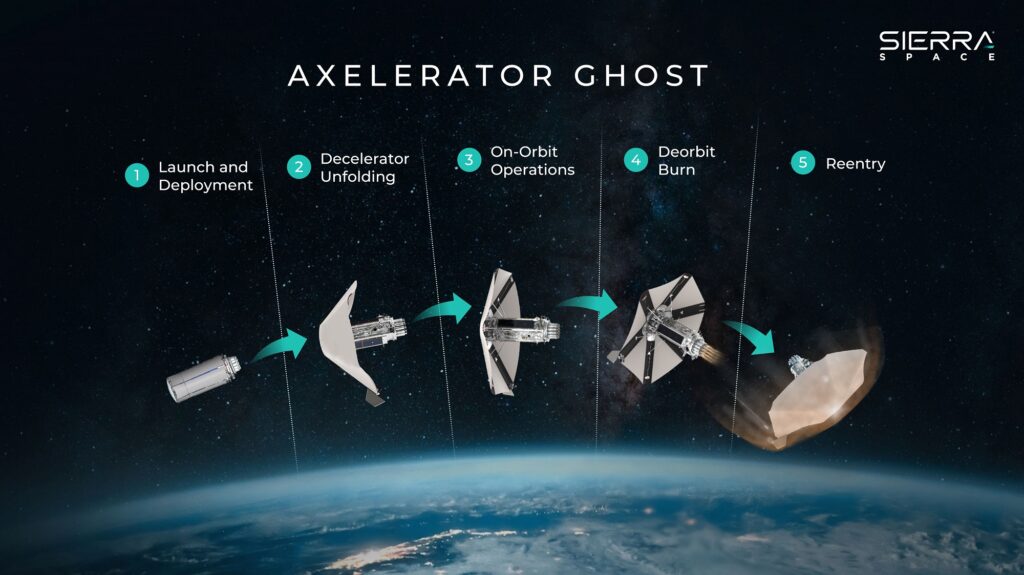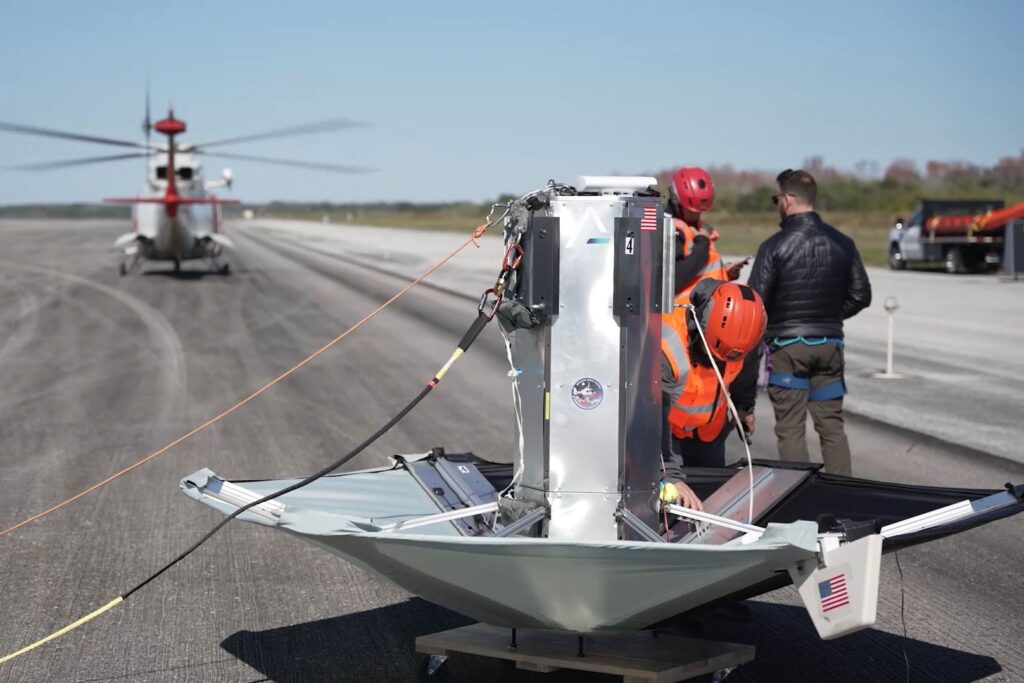Sierra Space has completed the first test of its logistics spacecraft, the Sierra Space Ghost. This solution aims to deliver critical defense supplies to any location on Earth within 90 minutes.
Sierra Space’s Axelerator incubator program has developed a new system called Ghost, which includes a deployable decelerator to protect a pre-staged payload during re-entry from orbit. This system is designed to last five years while in orbit and is equipped with pre-determined supplies that can be quickly reoriented for targeted re-entry.
With this new technology, operators on the ground could order pre-staged supplies already in an on-orbit inventory or positioned with rapid launch capability and deploy them down to Earth within 100 yards (90 meters) of where they are needed.

“As we continue to innovate at speed, this test enables us to build, test, learn and accelerate the development of a revolutionary new operational asset for national security,” said Tom Vice, CEO of Sierra Space. “We envision having an inventory of Sierra Space Ghost vehicles strategically positioned and readily accessible and deployable within 90 minutes to critical locations anywhere on Earth.”
The recent testing campaign included dropping the Ghost in three different configurations from up to 5,000 feet (1,500 meters) using a Sikorsky S-76 helicopter.
In the initial test, the system was deliberately dropped without a parachute to calculate the impact force. After witnessing tumbling during the first drop, modifications were made before proceeding to the next test. The second test involved a parachute, with the objective of achieving a precise landing to comprehend flight dynamics and speeds. The final experiment showcases the Ghost’s return capability by separating the shield portion from the payload portion mid-flight.
The next stage of the tests will be to develop the operational infrastructure and architecture, communication systems, and data recording to ensure seamless spacecraft operations.
Space, the next frontier for cargo?
Using space as a channel for rapidly transporting critical military assets is not a new idea. In the 1950s, NASA’s ambitious Project Icarus (later renamed Ithacus) imagined using a rocket “capable of carrying 1,200 troops to any trouble spot on Earth in 45 minutes.”
More recently, the US Department of Defense has shown interest in the potential to use the SpaceX Starship rocket as a point-to-point cargo vehicle. The US Air Force Research Laboratory (ARFL) awarded Elon Musk’s company a $102 million contract to explore these applications.

